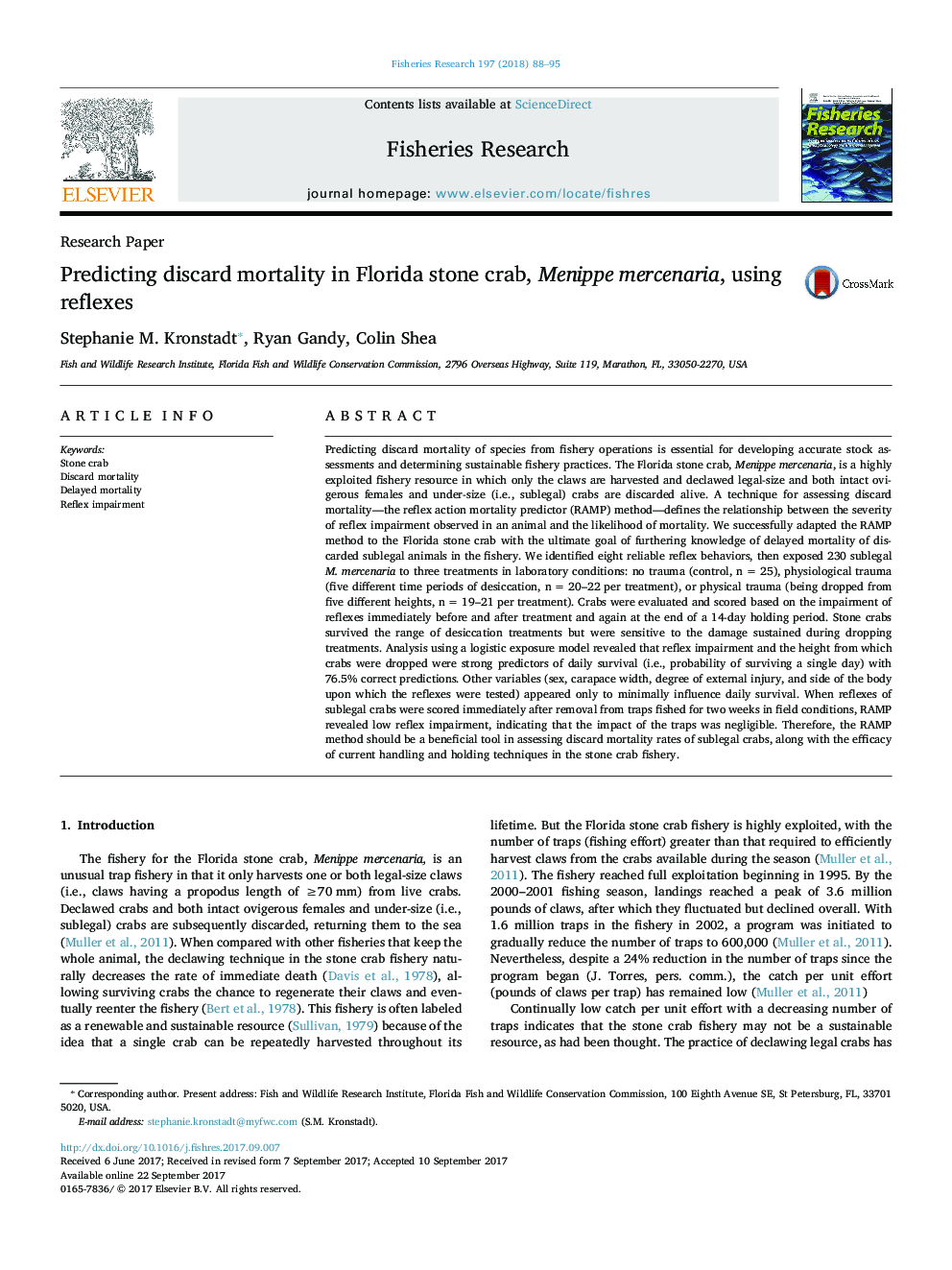| Article ID | Journal | Published Year | Pages | File Type |
|---|---|---|---|---|
| 5765445 | Fisheries Research | 2018 | 8 Pages |
â¢The RAMP method was adapted to the Florida stone crab.â¢Eight reliable reflexes were identified.â¢Reflex impairment and physical trauma were strong predictors of crab survival.â¢Based on the developed RAMP curve, traps had negligible impact on crab survival.
Predicting discard mortality of species from fishery operations is essential for developing accurate stock assessments and determining sustainable fishery practices. The Florida stone crab, Menippe mercenaria, is a highly exploited fishery resource in which only the claws are harvested and declawed legal-size and both intact ovigerous females and under-size (i.e., sublegal) crabs are discarded alive. A technique for assessing discard mortality-the reflex action mortality predictor (RAMP) method-defines the relationship between the severity of reflex impairment observed in an animal and the likelihood of mortality. We successfully adapted the RAMP method to the Florida stone crab with the ultimate goal of furthering knowledge of delayed mortality of discarded sublegal animals in the fishery. We identified eight reliable reflex behaviors, then exposed 230 sublegal M. mercenaria to three treatments in laboratory conditions: no trauma (control, n = 25), physiological trauma (five different time periods of desiccation, n = 20-22 per treatment), or physical trauma (being dropped from five different heights, n = 19-21 per treatment). Crabs were evaluated and scored based on the impairment of reflexes immediately before and after treatment and again at the end of a 14-day holding period. Stone crabs survived the range of desiccation treatments but were sensitive to the damage sustained during dropping treatments. Analysis using a logistic exposure model revealed that reflex impairment and the height from which crabs were dropped were strong predictors of daily survival (i.e., probability of surviving a single day) with 76.5% correct predictions. Other variables (sex, carapace width, degree of external injury, and side of the body upon which the reflexes were tested) appeared only to minimally influence daily survival. When reflexes of sublegal crabs were scored immediately after removal from traps fished for two weeks in field conditions, RAMP revealed low reflex impairment, indicating that the impact of the traps was negligible. Therefore, the RAMP method should be a beneficial tool in assessing discard mortality rates of sublegal crabs, along with the efficacy of current handling and holding techniques in the stone crab fishery.
